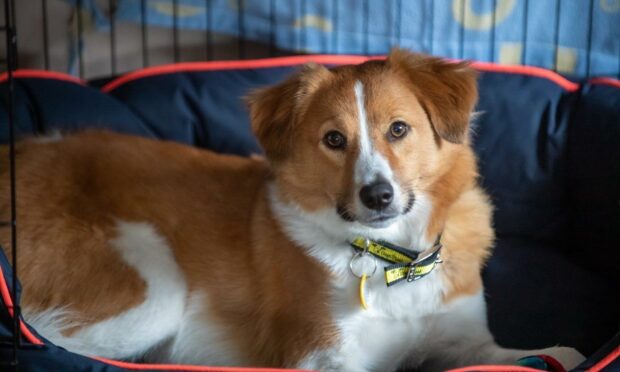A Scottish charity has issued advice to dog owners in the run up to bonfire nigh.
Dogs Trust have issued a list of top tips to help pet owners prepare their pets for the unexpected bangs and bursts of the country’s annual fireworks spectacle.
Officials are calling on dog owners to put the welfare of their four legged friends at the forefront, ensuring their surroundings are secure and comfortable.
Sandra Downie, Glasgow rehoming centre manager urged owners to consider the welfare of their four legged friends in the run up to the annual display.
“Dogs have approximately four times more sensitive hearing than humans, so the loud cracks and bangs of fireworks can often be a terrifying and confusing experience for them,” she said.
“Fireworks tend to be sudden, unpredictable and bright. This combination can be distressing and have a lasting impact on dogs.
“There are lots of things dog owners can do to help make fireworks less stressful for their dogs. Simple steps such as providing safe spaces for them to hide or settling them before the fireworks start can make a big difference.”
She added: “We would also urge anyone thinking of putting on their own fireworks display to consider the welfare of their four-legged friends and others in the neighbourhood by following our Firework Dog Code.”
Dogs Trust top tips
In their advice guide, Dogs Trust urges owners to feed and walk their dog before it begins to get dark and the fireworks begin as they may become unsettled.
Homeowners should also ensure their property and garden are secure during the fireworks, as some dogs may try to run away if they’re scared.
Keeping your pet indoors and providing a safe hiding space in your house is also very important to ensure your dog has somewhere safe in their favourite room, for example a comfy bed under a table with blankets to make it cosy and help with soundproofing.
Close the curtains, turn lights on, and turn up the volume on your TV or radio to mask the firework noises.
If your dog just wants to hide away then don’t force them to come out of their hiding place, allow them to stay where they feel safe.
For households planning their own firework display, animal conservationists are urging them to keep it short, limiting your display to 30 minutes or less.
Warning your neighbours and opting for quieter, lower decibel fireworks is also considerations being put to dog owners by the charity.
Officials hope this advice will help limit the stress experienced by pets during one of the country’s annual spectacles.
Read more:
- Search for missing fisherman Joe Masson continues near Fraserburgh
- Highland trains delayed by ‘up to 60 minutes’ due to signal fault on two different lines
Therapy for young pups
Ms Downie also issued advice for owners of young pups, urging them to seek support through their sound therapy programmes.
She added: “For those who have welcomed a puppy into their life recently, we also have free sound therapy programmes on our website that can help to gradually expose puppies to different noises in a positive way, so they perceive them as normal.
“If your dog is very worried by fireworks or other loud noises, they might need longer-term treatment. If that is the case, it would be a good idea for owners to have a chat with their vet. They can check there are no underlying health conditions that might be affecting behaviour, and then owners can discuss referral to an accredited behaviourist for support and tailored advice.”

